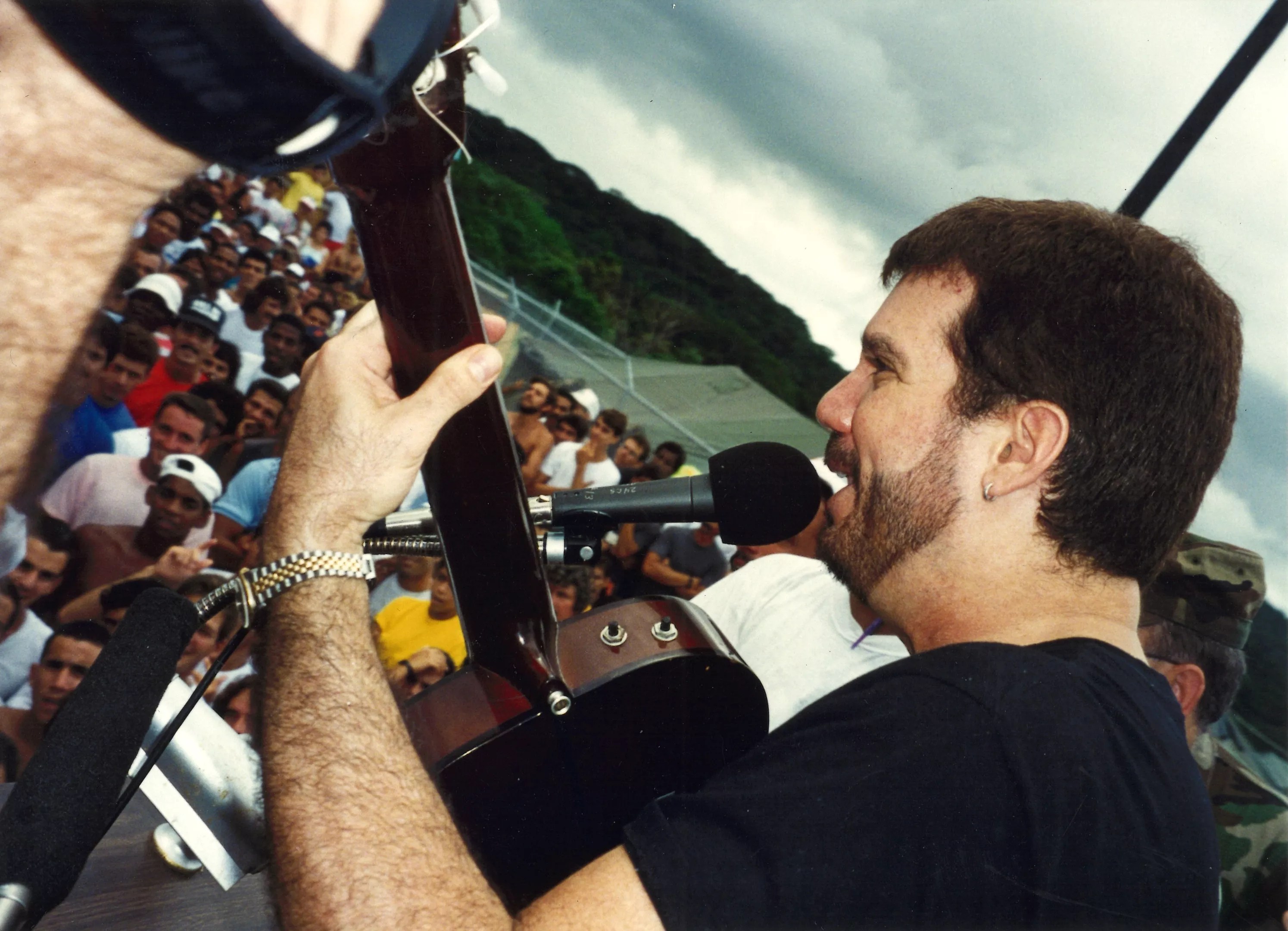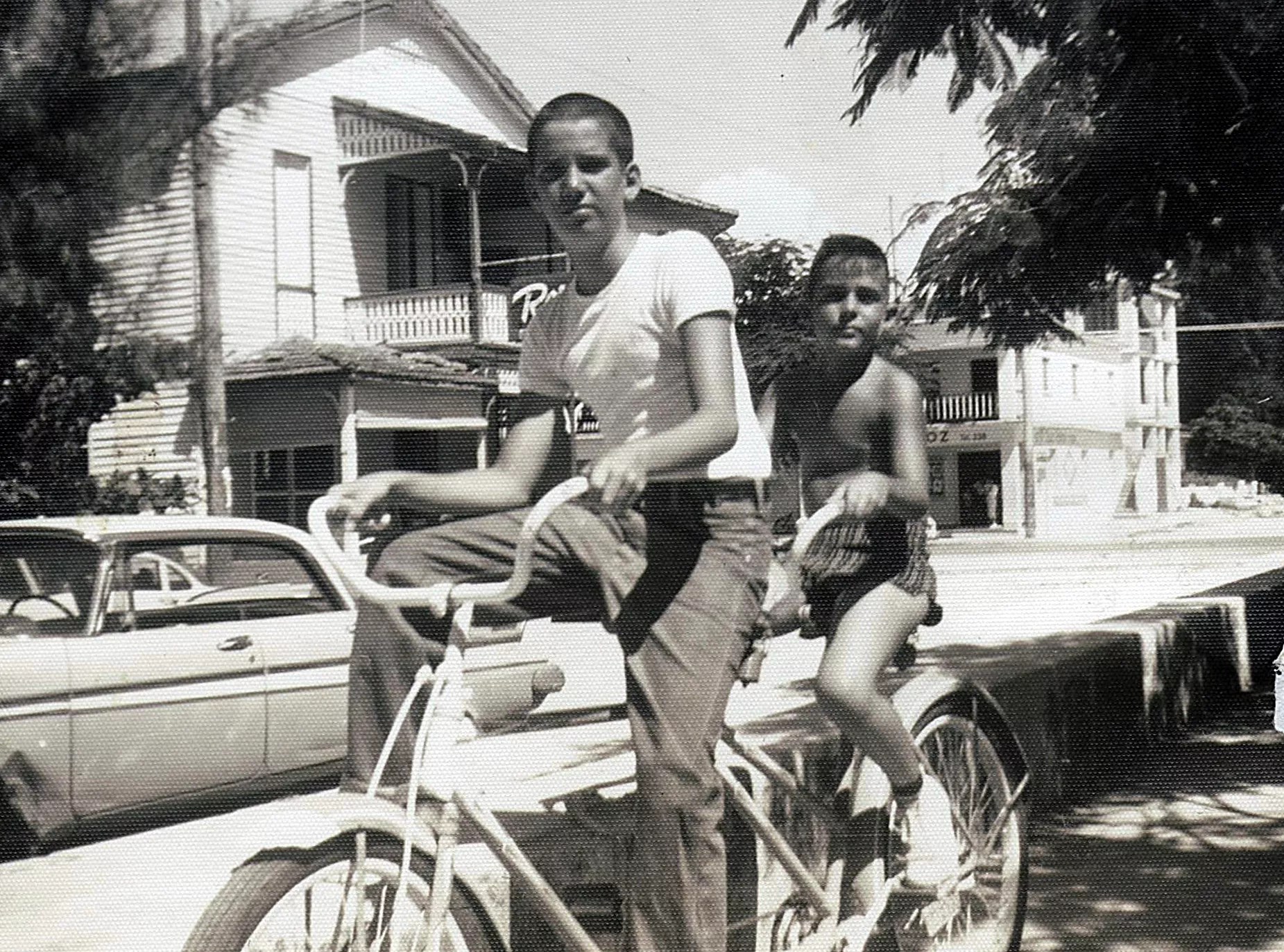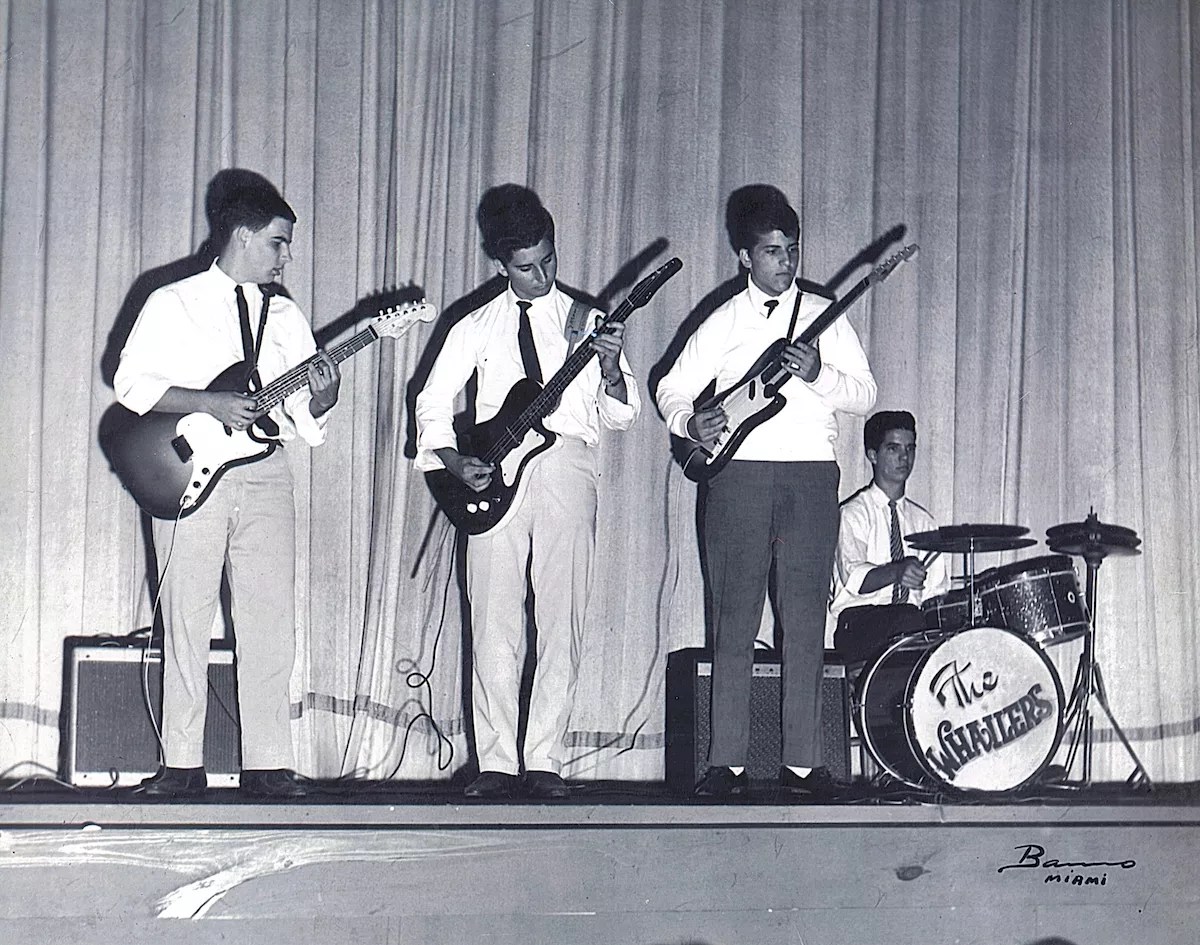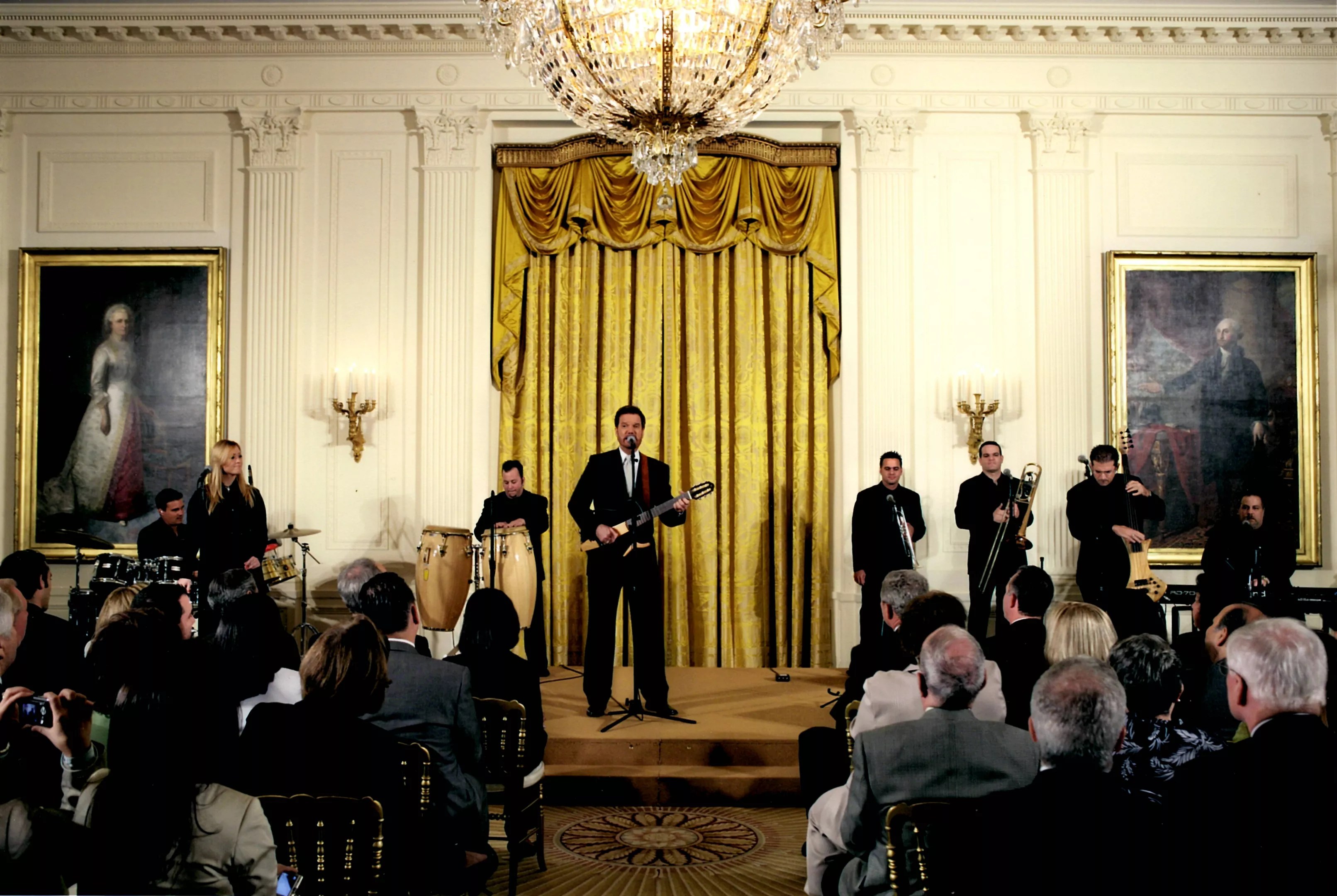
Zarabanda Productions photo

Audio By Carbonatix
In the pop music business, a lifetime is measured in weeks and months. That’s how long it takes for trends to fade, styles to fall out of fashion, and stars to be made and discarded as the next one is ready to sell a product. A 50-year music career is unimaginable. But there always has been more to Cuban-born singer, songwriter, and producer Willy Chirino than pop hits. There is the refugee-kid-to-pop star story and his role in the development of the Miami Sound, a musical mirror to a growing city that speaks in many languages and accents. And then there is Chirino’s bold human-rights activism regarding Cuba – and the songs, of course, including “Nuestro día (Ya viene llegando)” (“Our day is coming”), that became anthems for many Cubans, both in Cuba and exiled.
It’s a story that will be celebrated at HistoryMiami Museum’s “Willy Chirino: 50 Years of Music,” which opened on January 27 and runs through September 10. On display will be memorabilia such as his Grammy award, Latin Grammy award, Billboard awards, clothing worn at significant events, and his first guitar after arriving in the United States. Other pieces include the original handwritten lyrics to his hits, “Soy” (1974), and “Nuestro día” (1991), and a torn Cuban flag with his name on it that was found on an empty raft by the Coast Guard in the Florida Straits in the early 1990s.
For Chirino, 75, the exhibit is a chance “for people to get a better idea of where I come from, who I am, and what I have done to survive 50 years in the music business, which is not easy,” he says during an in-person interview. “To still be making music is awesome.” He just released a new album. Sigo Pa’lante, which means ‘I Keep Going Forward,’ and Chirino says, “that’s what it’s all about – [to] keep moving.” The album is his first studio recording of new music since “Pa’lante” in 2008.
As part of this year of celebrations, Chirino is headlining a James L. Knight Center concert on Saturday, March 11. The event, which he notes will feature “a lot of big friends of mine,” will review his long career and highlight the new album.
This year, make your gift count –
Invest in local news that matters.
Our work is funded by readers like you who make voluntary gifts because they value our work and want to see it continue. Make a contribution today to help us reach our $30,000 goal!

Willy Chirino (front) on a bike in Consolación del Sur, Cuba, in 1957.
Zarabanda Productions photo
Telling Chirino’s life and career was a natural fit for the museum’s mission, says Natalia Crujeiras, chief executive officer and executive director of HistoryMiami Museum.
“For 82 years, HistoryMiami has been the steward in collecting artifacts, objects, audio, oral history stories, everything that tells the story of Miami – and Willy Chirino’s story is a Miami story,” Crujeiras says. “It is, perhaps, the ultimate Miami story.”
Born Wilfredo Jose Chirino Rodriguez in Consolación del Sur, a small town in the Pinar del Río province, Cuba, he arrived in Miami in August 1961 as part of Operation Pedro Pan, an exodus of young people following the revolution in Cuba. He was 14 years old.
Like many who left the island nation then, Chirino thought he would return home in a matter of weeks.
“Oh yes, that was me when I left, which made the process a little bit less painful,” he says.
“When I said goodbye to my friends, I wasn’t very emotional because, in my mind, how could a declared communist government survive 90 miles away from the United States? So, I’ll be gone maybe three months, six months at the most; I’ll learn a little English and be back. Little did we know.”
There have been many hits and gold records since those days, but Cuba and the political situation never seem far from his mind. As he sees it, with success comes other responsibilities, and Chirino embraces his role as an activist artist. He recalls writing “Nuestro día (Ya viene llegando)” (“Our Day is Coming”), “to help heal himself. “To have the world listen to your experiences, share your pain, and who you are. It tends to be a process of self-healing.”

Willy Chirino with his first band, the Whalers, in 1964
Zarabanda Productions photo
The song was too long for radio and positioned last in the album. But “Nuestro día” touched a nerve inside Cuba, where his music was then banned, and among exiles. “That song is a mystery to me,” he says quietly as if thinking out loud. “When I wrote it, I wasn’t expecting anything of it, and neither did the record company. It’s a song that talks about my own experiences and, in the end, has a message of hope to the Cuban people.” His latest album also has a protest anthem about the Cuban regime in “Que Se Vayan Ya” (“Get Out Now”).
“I am Cuban. We have a very sad situation, and I have a megaphone,” he says. “For 64 years, my country has been under the rule of a very oppressive government that nobody elected. People in Cuba are desperate. So it’s my responsibility as an artist, as a Cuban who knows the pain of my people, to be their voice because they have no voice. I have to speak about that.”
But Chirino also calls himself “a proud Miamian.” He grew up in Miami, and some experiences remain fresh in his memory. A serious Beatles fan – in 2011, he reimagined a dozen Beatles classics with a Latin accent for his album, My Beatles Heart – Chirino still becomes animated as he recalls witnessing the band’s arrival in Miami in 1964. “My friends and I decided to go to the airport, and I remember moving without moving my feet,” he says, chuckling. “The crowd was lifting me as it moved. It was an unbelievable experience.” It is a thrill for him to recall that, years later, he performed at the Napoleon Ballroom at the recently demolished Deauville Hotel in Miami Beach on the same stage where the Beatles played for their second appearance on the Ed Sullivan Show.
He also grew up with Miami.

Willy Chirino and his wife, singer Lissette Alvarez, perform at the White House for President George W. Bush in 2008.
Zarabanda Productions photo
Along with fellow Cuban exile Carlos Oliva, he was instrumental in developing the Miami Sound, a novel blend of Cuban music, rock, pop, jazz, and R&B that spoke to the sounds and rhythms of a growing city.
“I loved Celia Cruz, Beny Moré, Conjunto Casino, bands that were very important in Cuba when I left. But when I got here, I was listening to the Beatles, the Rolling Stones, and the Beach Boys. I loved Motown. I had to put them together because I loved them all.”
There was nothing calculated about it. To Oliva and Chirino, fusion came naturally, he says. “But in those times, fusions were not popular because record companies and radio stations didn’t know what to do with them. They’d say, ‘It’s not salsa, it’s not bolero, it’s not a ballad, it’s not rock,’ so our music had no place to go. We had a tough time in the beginning.”
For Chirino, that story is one of the many involving Cuban exiles shaping Miami as we now know it. “It’s a beautiful thing to know that Miami is Miami because of so many Cubans that came in that era,” he says. Those exiles had nothing, he underlines, but “they had the knowledge of how to be successful – and they started building Miami, and Miami has turned so big and so incredible from those early years of Cuban exile.”
He pauses to reflect on his career and the exhibit. “It’s been a roller-coaster experience. And after so many years and having seen everything that I’ve seen, I’m honored and happy to share it.”
– Fernando Gonzalez, ArtburstMiami.com
“Willy Chirino: 50 Years of Music.” On view through September 10, at HistoryMiami Museum, 101 W. Flagler St., Miami; 305-375-1492; historymiamimuseum.org. Tickets cost $5 to $10.